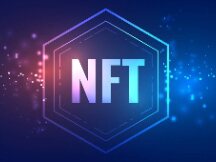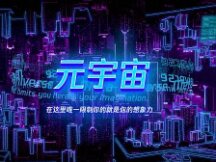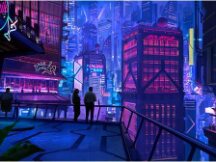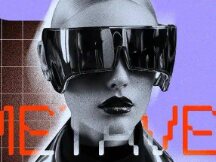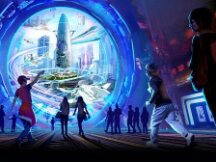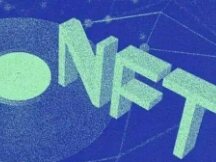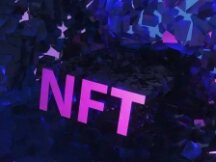Interview with Neil Stephenson, father of Metaverse and author of "Avalanche"
Historians of science can adopt new ideas and new research very quickly.
A few write about issues that affect the survival of mankind, few have won numerous awards for their scientific writing, and very few have become leaders among futurists in the field. Big savings, thousands of dollars. Legendary science fiction writer Neil Stevenson did three seemingly impossible things.
Writer, expert, videographer and consultant to Stephenson, he also wrote the historical epic "Cryptonomicon" and "The Baroque Cycle", the new fiction "Diamond Age" (Diamond Age) and the modern thriller. "Zodiac". Write. "and" REAMDE ", sci-fi epic" Seven Eve ", etc.
His 'Avalanche', published in 1992, introduced the concept of 'meta universe' before the 'matrix' series, and 'Zodiac' in 1994 was also a work over 20 years before Neuralink. (Brain-computer interface developed by Musk).
Stevenson's new sci-fi novel, "Termination Shock," continues prophetic models from other books, explaining how humans are technologically advanced to influence climate change for their survival. His ingenuity, his unique knowledge of the use of technology, his finesse of writing and his close attention have made him a model for historians of scientific research.
Question 1: You are the most authentic writer today. Can you tell us about your creative process and how you chose your topic? How do you research if you choose a topic?
My creative process was like fetching water from a bucket, and the ideas kept coming out, so I had to put the bucket under the tap so I could have it all the time.
There are many ways to capture this water, but for me the best is to write a book. I write almost all the time and I don't have time to rest or relax after writing books and start the next one. Because so many ideas go crazy for me after not leaving.
I usually have a few ideas in mind that will be the subject of my next book. I usually make decisions on impulse when I start my next project. So it's not planned in advance, it's just a quick decision based on what you think is most interesting and creative.
But to get it right, some ideas should still be germinating in his head for a while. Once you've decided which book to write next, you'll need to spend some time researching it. If this is a history book, I think you should research the history, but the important thing is that the story is useful and interesting for the reader.
They (the book) should start as a way to encourage readers to engage, engage with them, and engage with the characters, but sometimes learning too much about the story at the beginning can confuse the process. So I try to focus on the beginning of the story first. Then if you think you're off to a good start, you can slow down a bit and let the research get what I've written.
The biggest benefit of this study is to provide content and development plans, I wouldn't have considered them if I had created them all. And while I researched and studied the concepts of orbital technology, orbits, and rockets in “Seveneves,” it gave me ideas I wouldn't have thought of if I just thought about it in the air.
What I'm trying to say is that research is booming in the middle of a project and I like to go back a bit. Because the more you research, the more you think you should count. It is foolish not to think and devote time and energy, sometimes money, to research. But there's always an attempt to keep our research there, even if it doesn't work for the purpose of the story.
Question 2: I usually write in the cyberpunk style, but the "baroque circle" style is completely different. How did you make this change?
I have written historical stories like "The Baroque Cycle" in the past, which I personally love.
The book "The Baroque Cycle", written 20 years ago, was written by me and some of my favorite authors in European history and martial arts. From ancient Athens to the 20th century.
We thought about making a movie and moving to Hollywood. But we still want to tell this story as a new story, so it's meant to be a new story or a new story. So, as a creative group, I finally made up the story of the conquest of Europe by the Mongols in the 13th century, when the Mongols conquered Poland, Germany and Hungary from the west. Mongolian Event, One Khan Dies, Tradition says that when a good Khan dies, all Khans must return to Mongolia to choose the next Khan.
So, the meaning of "baroque circle" is that it is no different. Legal records show Khan died during the hunt. For the sake of history, the new literature is asked that European martial arts masters crossed Asia to hunt it, especially to keep Mongolian tradition safe from any cross interference. This is the story of the "Baroque Cycle". . We wrote it first for e-advertising and then Amazon decided to release it as a new movie. Later, other members of the group created new movies, comics, and other gadgets around the world.
Question 3: How did you come to Magic Leap? What do you need to work on in the new area?
At first I didn't know (Magic Leap). Then four people from work came to our house. They are very ambiguous, but since the contract did not disclose it, they taught me some things and showed me some of their skills. We have come to Magic Leap, taking advantage of the future supported by this technology.
Then I went to Florida and met CEO Ronnie Abovitz, who gave me the opportunity to do something that I found interesting. I love everyone I meet and find this project charming. For many years, I always used to do technical work in the afternoon. I write in the morning, but during my break I have to figure out how I can change my perspective on the book.
At different points in my career, I got fired from time to time because I worked for Blue Origin, Intellectual Ventures Labs, and the start-up Subutai which created "Mongoliad". I decided to give it a try, start working on it, and finally form a small team in Seattle to create some old themes that could work with supplies.
AR content is a difficult and engaging task because it wants people to know their surroundings and make them and their surroundings perform well. Make a movie that can do this not just like a movie. The material is very complex.
A camera device is needed to monitor the entire environment (lidar, other sensors, if possible) and to connect the cameras seen in the true three-dimensional model of the hall building. This is called SLAM in the jargon, which stands for synchronous positioning and drawing. The tool stores the data in the cache or creates the data dynamically. Then you have a design for the room that is constantly being updated and updated. Then the occlusion must be decided. If I have a chair and there is something behind it should block the chair like in the real world.
However, the main tasks of this system should be simpler than words, but even with these tasks you cannot start creating content because you need a machine game designed to create 3D content. To this end, we have developed an intelligence app called "Baby Goats" and launched it as an app to help other developers.
We're also committed to multipurpose IP addresses that create a world of creative augmented reality based IPs, like HoloLens that Microsoft is making, but we need a retailer and a retailer to support it.
Question 4: What do you think of the meaning of the global meta? How is this different from the immortality you talked about in "Lost or Forgiveness in Hell"?
First of all, I think the meta-view of the world is still a long way off. Try Magic Leap itself. The goat app mentioned above is not working, and the current operation of this device is insufficient. It's the same thing. Do you like the argument about the chicken and the egg, the pre-ingredients or the pre-content?
And in “Spring or Dodge in Hell” (analog and digital, humans and machines, angels and demons, gods and disciples, in conflict and living forever), I trade more with research. In "Avalanche" I was very strict on orbital mechanics and rockets and all that and in "Spring" of course I did a little research on brain tests, and so on, but I hope the story will be creative. Or I won't write the truth.
In this case, you have one or more ideas. One is one of the 90s Silicon Valley technologists who will wear this ID bracelet and teach you how to freeze. It looks very interesting. I was born as a new writer 20 years ago or someone who did this and signed and legally all information that they will never forget and die right away so this is one of the ideas that make “fall”.
And the other is by physical examination. I am old enough to have a colonoscopy temporarily. If they let you go through the process, you lie, you stay the same, you remember and you talk. When people talk they get this photo and within seconds they forget about it and turn it off. After awhile, from the point of view of consciousness, until you feel the “resurrection from the dead”.
So that raises all kinds of questions about positive thinking. For example, what does it mean to be alive and aware? I'm 62 now, but 20-year-old Neil who went to college in Boston has passed away. I think about this and that, and I think it's an interesting topic. So, in theory, when we reach the level of advanced technology, the body should be able to repair damage from cosmic radiation and many other damages and ultimately be healthy. But in science fiction, people get old and still die.

Scan QR code with WeChat
